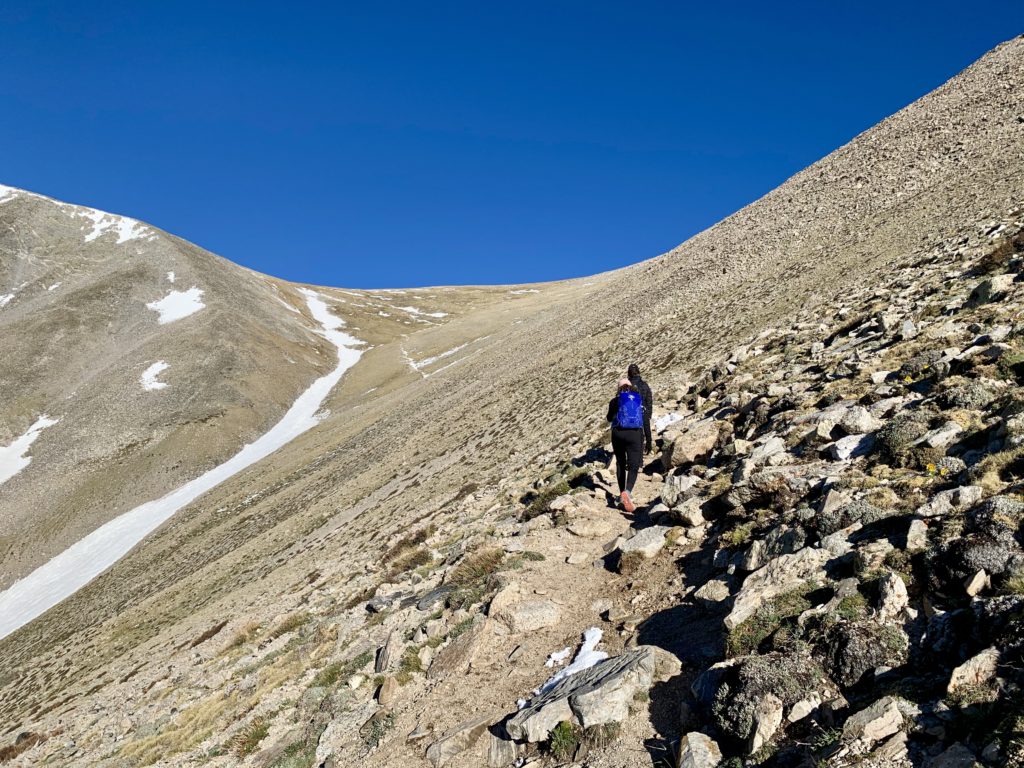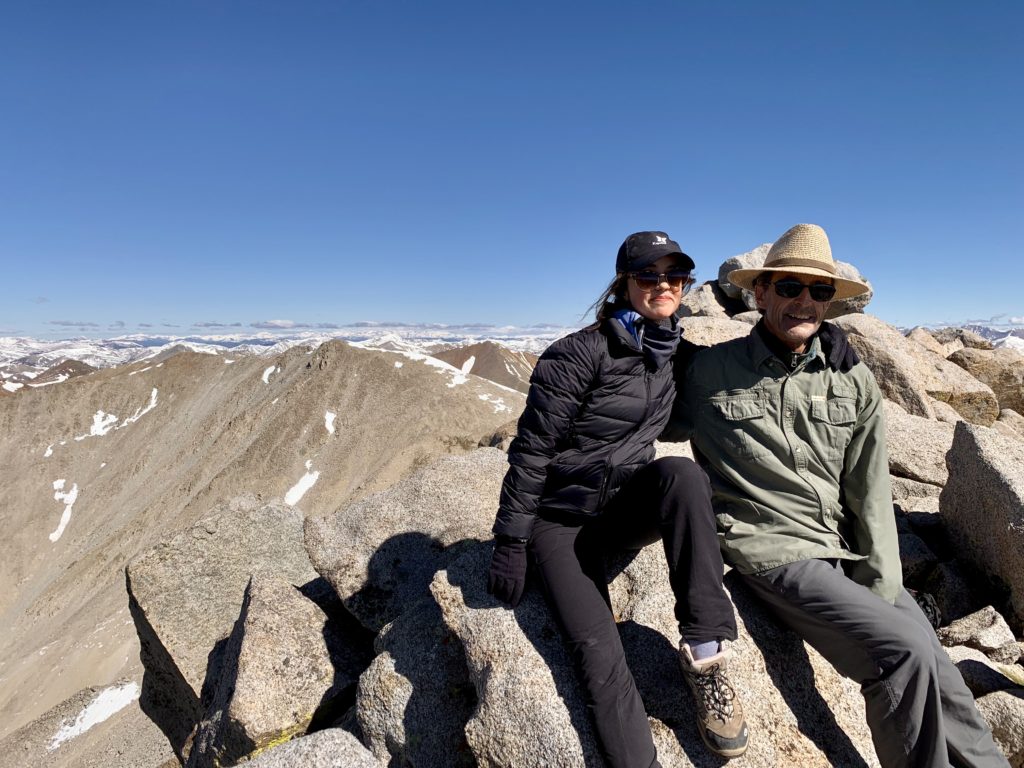The first rays of light angled up the mountainside, bathing the trunks of the pines in a golden hue. On a level patch of ground we paused to admire the sunrise and drink from water bottles, then pressed on uphill. For a time the trail followed a small stream whose course, rocky and root tangled, tumbled the mountain’s fall line, straight and true.
The trail then began to switchback across the spine of a ridge, the trees becoming more sparse and stunted, gnarled by the elements as we gained elevation and approached tree line. Here too the trail became looser and more rocky, a result of greater exposure to the combined effect of time, wind and water.

A lone tree a quarter mile ahead, silhouetted against the early morning sky, stood out. “Let’s take a break there. We should get a good view of how far we’ve come, and how far still to go.”
Upon reaching the tree we slipped off our packs, sat, and rummaged for snacks. The ground below us immediately fell away into a steep couloir that funneled toward a distant bottleneck, heavily treed. Behind our backs the trail continued to climb, traversing across the couloir toward a saddle that sat beneath the peak that was our ultimate goal. “Looks like we’re about halfway there,” I commented. “How are you guys feeling?”
For my daughter and her friend, it was their first fourteener, for me, only my second.
“Tired,” came the reply, “but we’re ready to keep going.”
I pointed to the saddle. “That’s our next stop. From there, the end is in sight.”
The downside of hiking in trees is sometimes it is difficult to gauge progress, one bend in the trail looking like the next. Being out in the open has its own similar drawback. After a half hour of trudging, the saddle appeared no closer. Heads down, we traversed the couloir, still patched in places with snow, a series of steep switchbacks towards the top.

Once on the saddle, the peak seemed close enough to touch, until the sight of a hiker half way up—a mere speck against the horizon—put the scale of the mountain into perspective. We sat on the trail for one last refueling stop, each exchanging stories we’d heard of mountaineering disasters, Everest traffic jams and time spent in the death zone. A group of hikers approached from below. I advised my daughter to move off the trail. “Let them step over me,” she replied, referring to the dark side of mountaineering.
The final ascent resembled a half hour on a stair master set to ten, a scramble up a jumble of boulders, following the path of least apparent resistance. Finally we sat at the summit, settled in the lee of a couple of boulders to shelter from a brisk wind that blew from the west. Far below to the east, town appeared as a mere smudge in the light of early morning. To the south, the highway cut through the heart of the San Luis Valley, the Sangres a thin dark razorback separating one valley from the next.
I checked the time. “Hard to believe, on a normal morning, you’d still likely be sitting around in your pjs, drinking coffee.”
“This is the hardest thing I’ve ever done,” said my daughter, her friend nodding in agreement. This, from a couple of ex professional-level ballerinas. “But the most satisfying,” she continued. “I see how this can get addictive.”
The return downhill took as much time as the up, in many ways more physically demanding. I took frequent breaks, sitting in shade where available while my climbing companions took their time behind me, alternately laughing, singing, and asking how much further to go. Three tired hikers eased in to my truck at the trailhead, my daughter and her friend marveling at how someone three times their age could kick their butt on such a hike.
I marveled the same thing myself until, two mornings later, I got out of bed to discover someone had removed both my femurs overnight, causing my quads to buckle under the strain of my weight and my legs to move in jerky spasms of their own volition as I tried to walk a straight line. For the next couple of days, coherent bipedal movement became something problematic, especially walking up or down stairs as the climb’s exertions finally caught up with me.
But through the discomfort, one thing still rang true. The experience was addictive.

